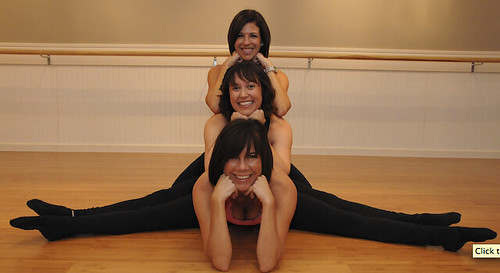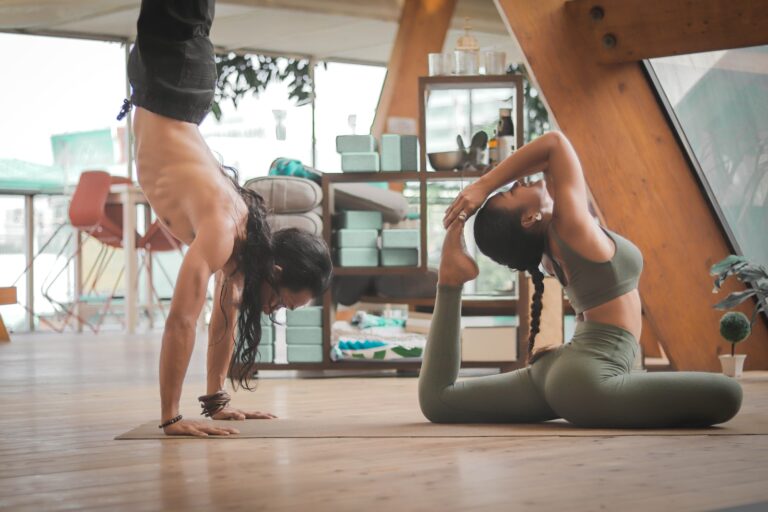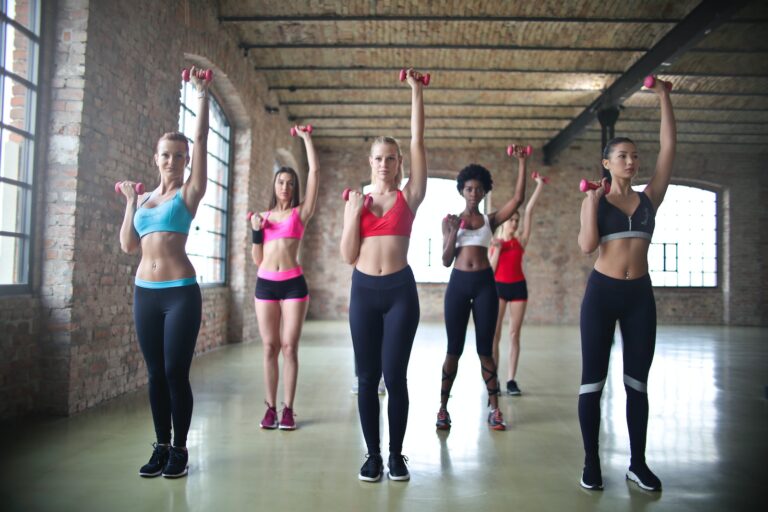A Comprehensive Guide to Barre Workouts for All Fitness Levels
Are you looking to sculpt a strong, lean body while improving your overall fitness and flexibility? Look no further than barre workouts! Popular among celebrities and fitness enthusiasts alike, this low-impact exercise method combines elements of ballet, Pilates, and yoga for a full-body workout that targets muscles you didn’t even know existed.
But don’t worry if you’re new to the barre scene – our comprehensive guide has got your back. From beginner-friendly tips to advanced variations guaranteed to challenge even the most experienced practitioners, we’ll show you everything you need to know about barre workouts at any level of fitness. Let’s raise the bar(re) together!
Introduction to Barre Workouts

Barre workouts are a great way to get a full-body workout in a relatively short amount of time. They are also perfect for people of all fitness levels, since the movements can be modified to make them either more challenging or easier.
Whether you’re new to working out or you’re a seasoned athlete, there’s a barre workout that’s right for you. In this guide, we’ll give you an overview of what barre workouts are and how they can benefit you. We’ll also provide some tips on how to get started with your own barre routine.
Benefits of a Barre Workout
Barre workouts offer a unique blend of cardio, strength training, and flexibility work that provides a wide range of benefits for people of all fitness levels. Whether you’re looking to lose weight, build muscle, or just improve your overall health, barre workouts can help you achieve your goals.
Here are some of the top benefits of a barre workout:
Weight loss: Barre workouts are an effective way to burn calories and promote weight loss. A typical one-hour class can burn up to 600 calories, making it an excellent addition to any weight loss program.
Muscle toning: Barre workouts target the smaller muscles groups that are often overlooked in traditional strength-training routines. This helps to create a long and lean physique while also helping to prevent injuries.
Flexibility and mobility: In addition to helping you build strong muscles, barre workouts also improve your flexibility and mobility. The stretching and lengthening movements help increase range of motion and reduce stiffness.
Improved posture: The focus on alignment and proper form in barre workouts can help improve your posture over time. This can lead to less pain and discomfort, as well as improved confidence and appearance.
Different Types of Barre Workouts
Barre workouts come in all shapes and sizes, so it’s important to find one that fits your fitness level and goals. Here are some different types of barre workouts to try:
-BEGINNER BARRE: If you’re new to the world of barre, start with a beginner workout. These workouts will help you get acclimated to the format and build up your strength and endurance.
-INTERMEDIATE BARRE: Once you’ve mastered the basics, move on to an intermediate workout. These workouts are more challenging, but still allow you to work at your own pace.
-ADVANCED BARRE: Ready to really push yourself? Advanced barre workouts are intense, but also incredibly rewarding. These workouts will test your limits and help you reach your fitness goals.
Simple Steps for Beginners
Assuming you have never done a barre workout before, here are some simple steps to start with. Of course, always listen to your body and modify as needed based on how you feel.
- Start by finding a comfortable spot in the studio and placing your mat down. If you feel like you need more support, grab a bolster or a chair from the side of the room.
- Once you’re settled, begin by warming up your body with some gentle stretches. Reach your arms overhead and side to side, roll your head and shoulders, and open up your hips with some gentle swings back and forth.
- Next, it’s time to start working those muscles! Begin with small isometric movements, holding each position for a few seconds at a time. For example, hold onto the back of a chair and lift one leg straight back behind you while keeping your pelvis level; or place your hands on your thighs and press down firmly while engaging your abs and lifting your hips off the ground just an inch or two.
- As you continue to work different muscle groups, make sure to keep moving slowly and deliberately. The burn should come from slow, consistent tension rather than jerky or bouncing movements.
- Throughout the workout, be sure to take breaks as needed – this is not a race! If you need 30 seconds to catch your breath or shake out a limb, that’s perfectly fine (and encouraged).
Equipment Used in Barre Workouts
There is a wide range of equipment that can be used in barre workouts, from basic hand weights to more complex resistance bands and yoga mats. The type of equipment you use will depend on your fitness level and the intensity of the workout you are looking for. Here is a breakdown of some common pieces of equipment used in barre workouts:
-Weights: Hand weights are often used in barre workouts to add resistance and help tone muscles. If you are new to using weights, start with lighter weights and gradually increase the amount of weight you use as you get stronger.
-Yoga Mat: A yoga mat can be helpful for doing floor exercises or stretching during a barre workout. If you don’t have a yoga mat, a towel or blanket can also work as a substitute.
-Resistance Bands: Resistance bands are another piece of equipment that can be used to add resistance to your workout. They come in different sizes and levels of resistance, so you can choose the right band for your fitness level.
-Ball: A small ball, such as a tennis ball, is often used during barre workouts to massage muscles and trigger points. You can also use the ball to add resistance when doing strength exercises.
Advanced Exercises for the Experienced
If you’re looking for some advanced exercises to take your barre workout to the next level, we’ve got you covered. These moves are designed for the experienced fitness enthusiast, and will help you build strength, flexibility, and balance.
- Pike Push-ups: Start in a plank position with your feet together and your hands under your shoulders. Slowly lower your hips toward the floor, then press back up to the starting position.
- Leg Lifts: Start in a standing position with your feet hip-width apart and your hands on your hips. Slowly lift one leg straight out in front of you, keeping your core engaged and your body upright. Lower back down and repeat on the other side.
- Tricep Dips: Start seated with your knees bent and feet flat on the floor in front of you. Place your hands behind you, shoulder-width apart, and slowly lower yourself toward the floor until your elbows are at a 90-degree angle. Press back up to the starting position to complete one rep.
- Plank Jacks: Start in a plank position with your feet together and hands under your shoulders. Jump your feet out wide, then jump them back together again. Repeat this movement as quickly as you can while maintaining good form.
- Russian Twists: Sit on the floor with both knees bent and pull them in toward your chest with both hands clasped around them.
Modifications and Variations
There are many ways to modify and vary a barre workout to make it suitable for any fitness level. Here are some ideas:
- If you’re new to barre, start with a basic class and gradually add more challenging elements as you get stronger and more comfortable with the movements.
- For a higher-intensity workout, try adding weights or using a resistance band to add resistance to the exercises.
- To make the workout more low-impact, use a foam roller or yoga block instead of a weight during some exercises. Or, omit the jumping movements altogether.
- To focus on specific areas of the body, such as the arms or legs, there are many variations of each exercise that can be done. Work with your instructor to find the best ones for you.
Tips and Tricks to Get the Most Out of Your Routine
There are a few things you can do to make sure you’re getting the most out of your barre workout routine. First, be sure to warm up properly before starting your workout. A good warm-up will help improve your range of motion and prevent injuries. Second, focus on proper form throughout the entire workout. This will help you get the most benefit from each exercise and prevent injuries. Finally, be sure to cool down and stretch after your workout. This will help your muscles recover and prevent soreness.
Conclusion
As you can see from this comprehensive guide, barre workouts are not only effective but also suitable for all fitness levels. From beginners to advanced athletes alike, there is something for everyone when it comes to barre classes. Whether you attend a group class or purchase an at-home program, incorporating barre into your routine will provide a total body strength and cardio workout that’ll help sculpt your dream body while keeping you motivated. With the right technique and form, there is no limit to what type of results you can achieve with a regular barre practice!







4 Comments